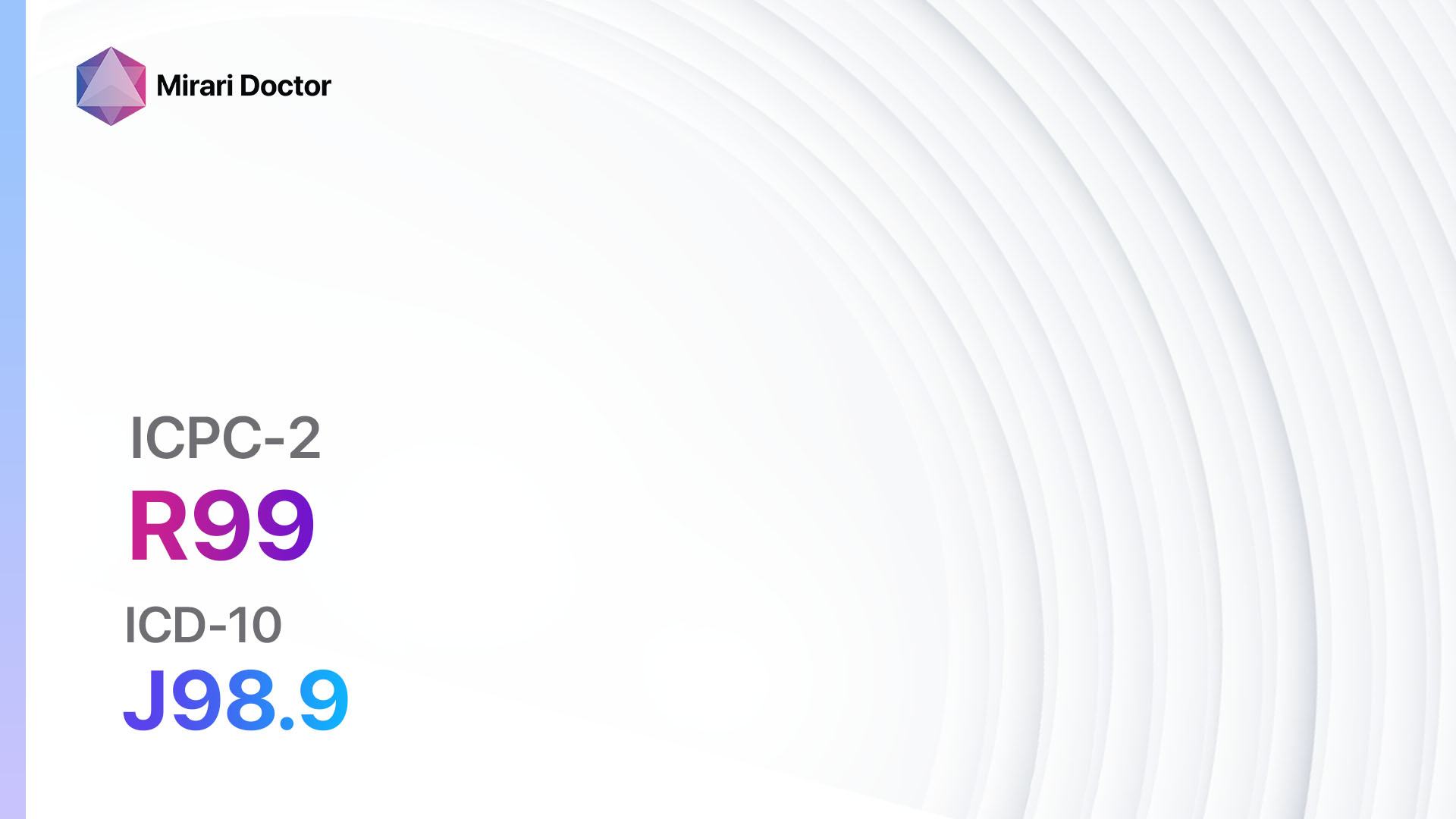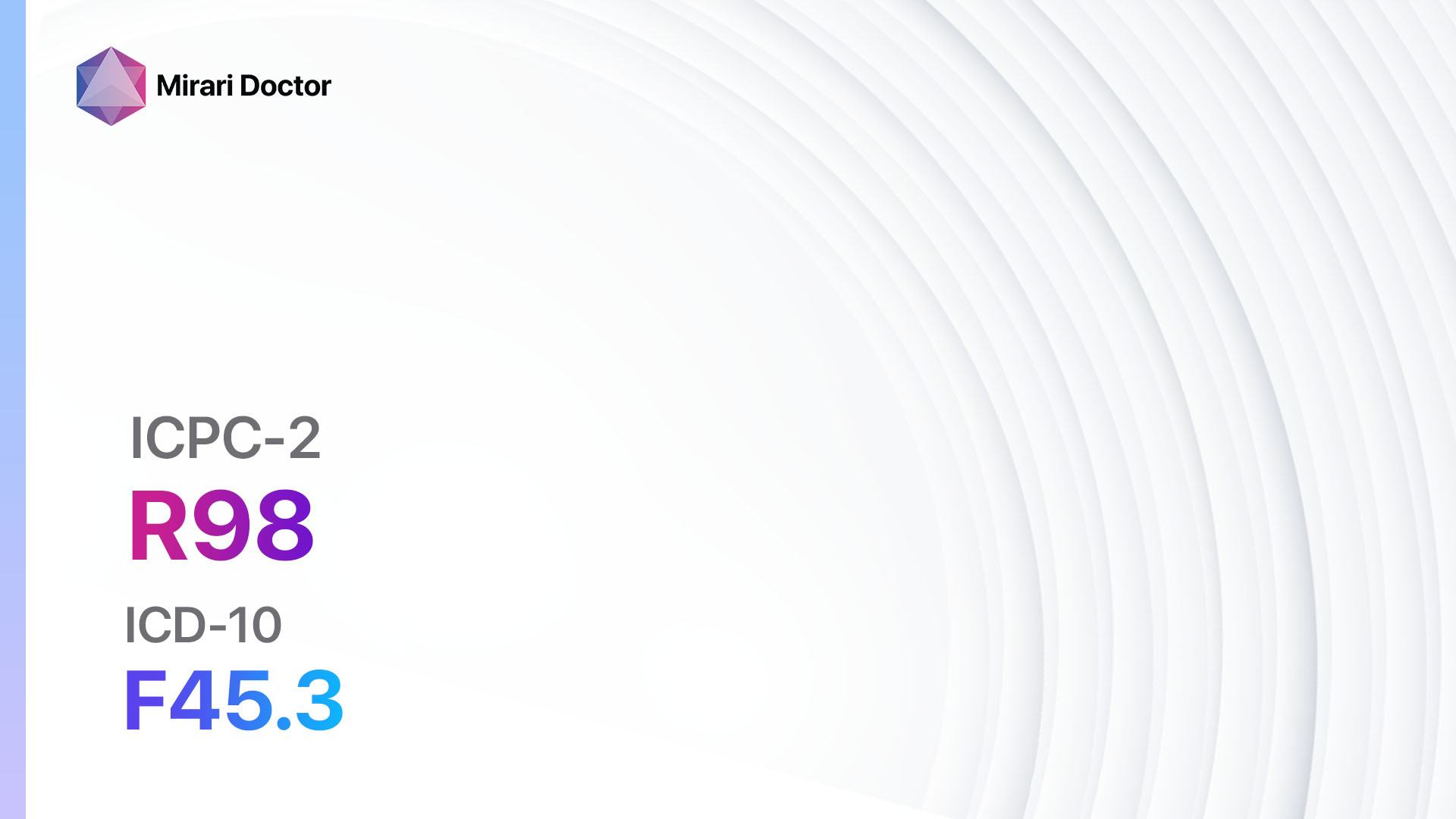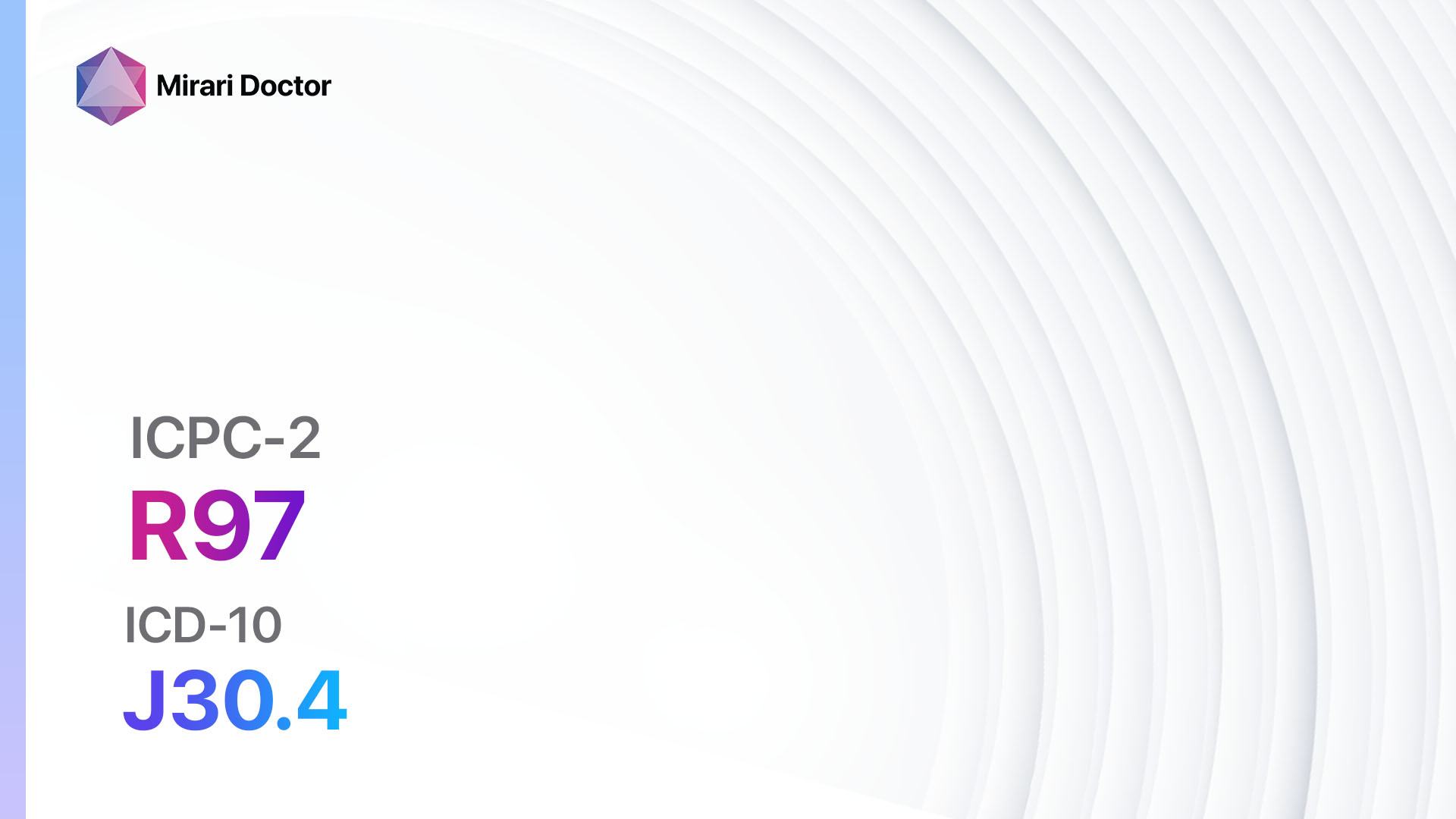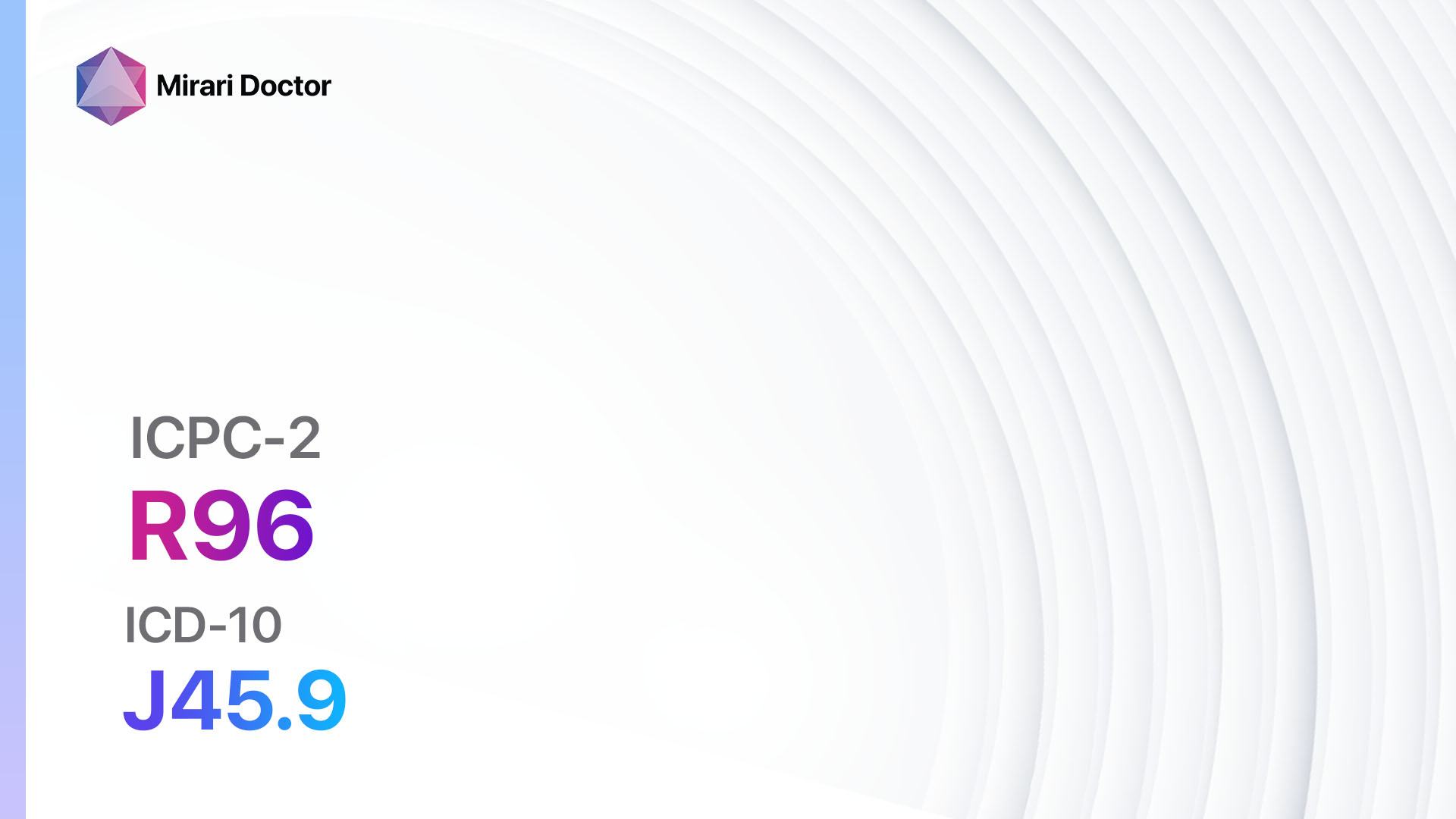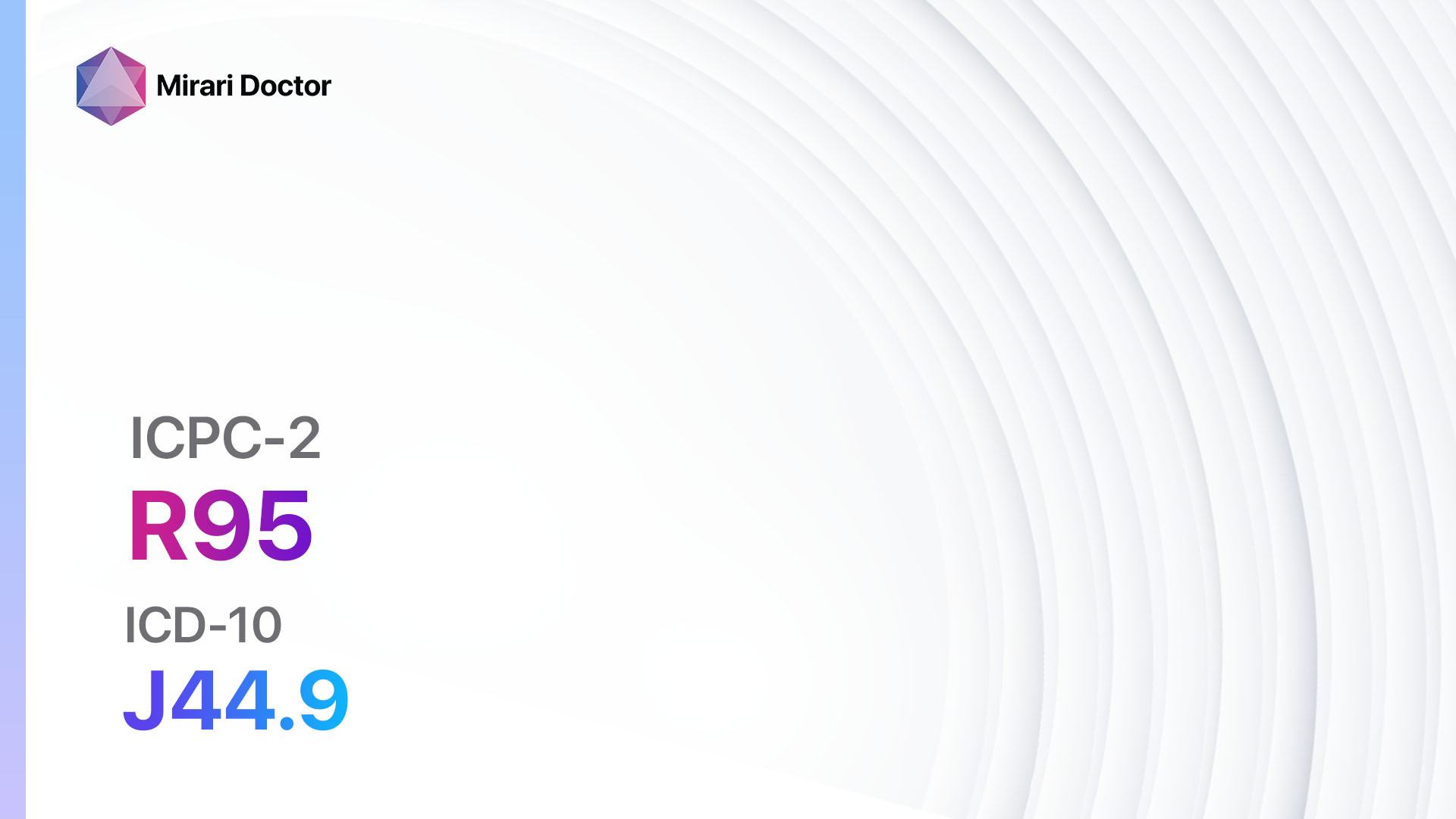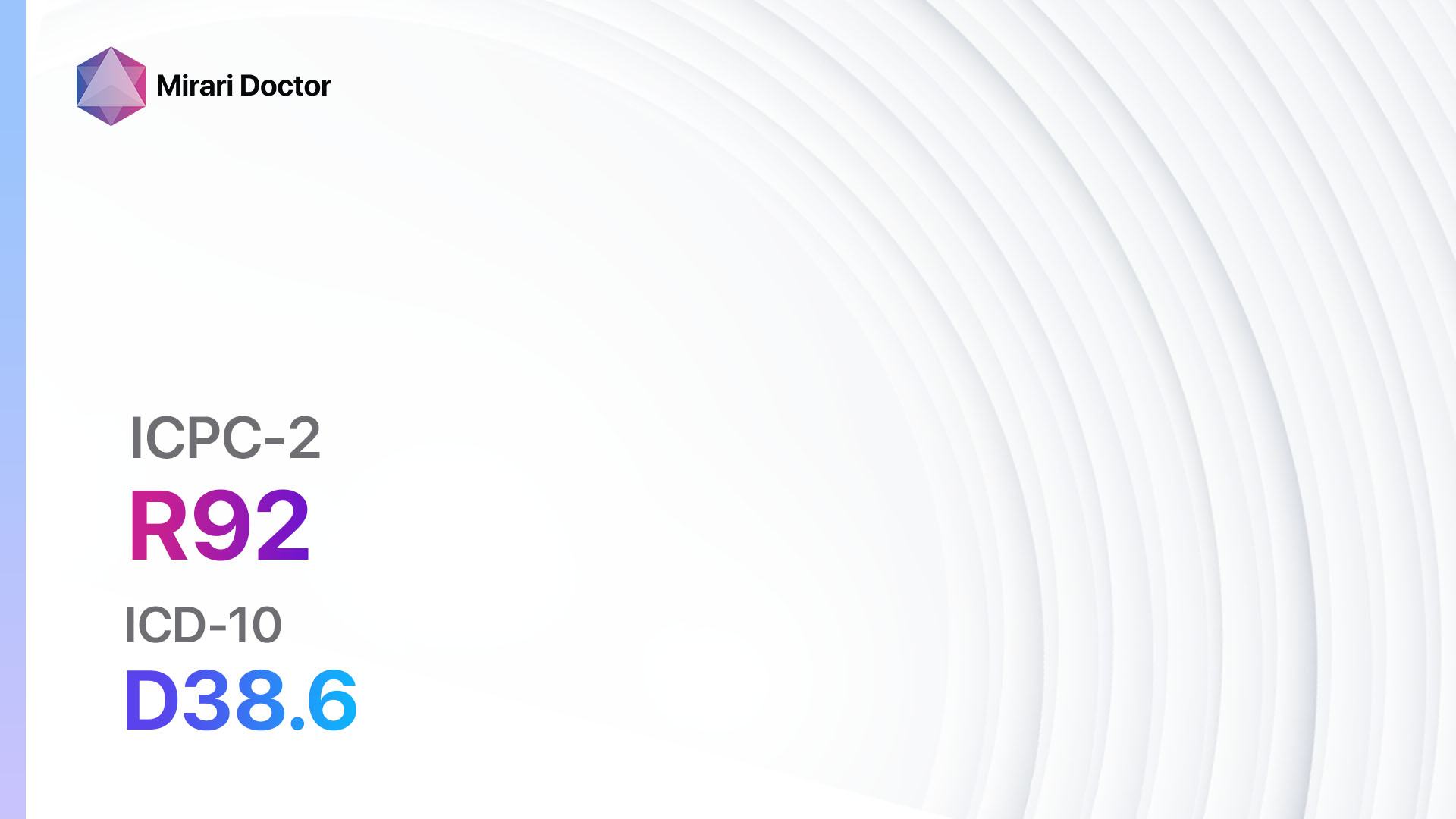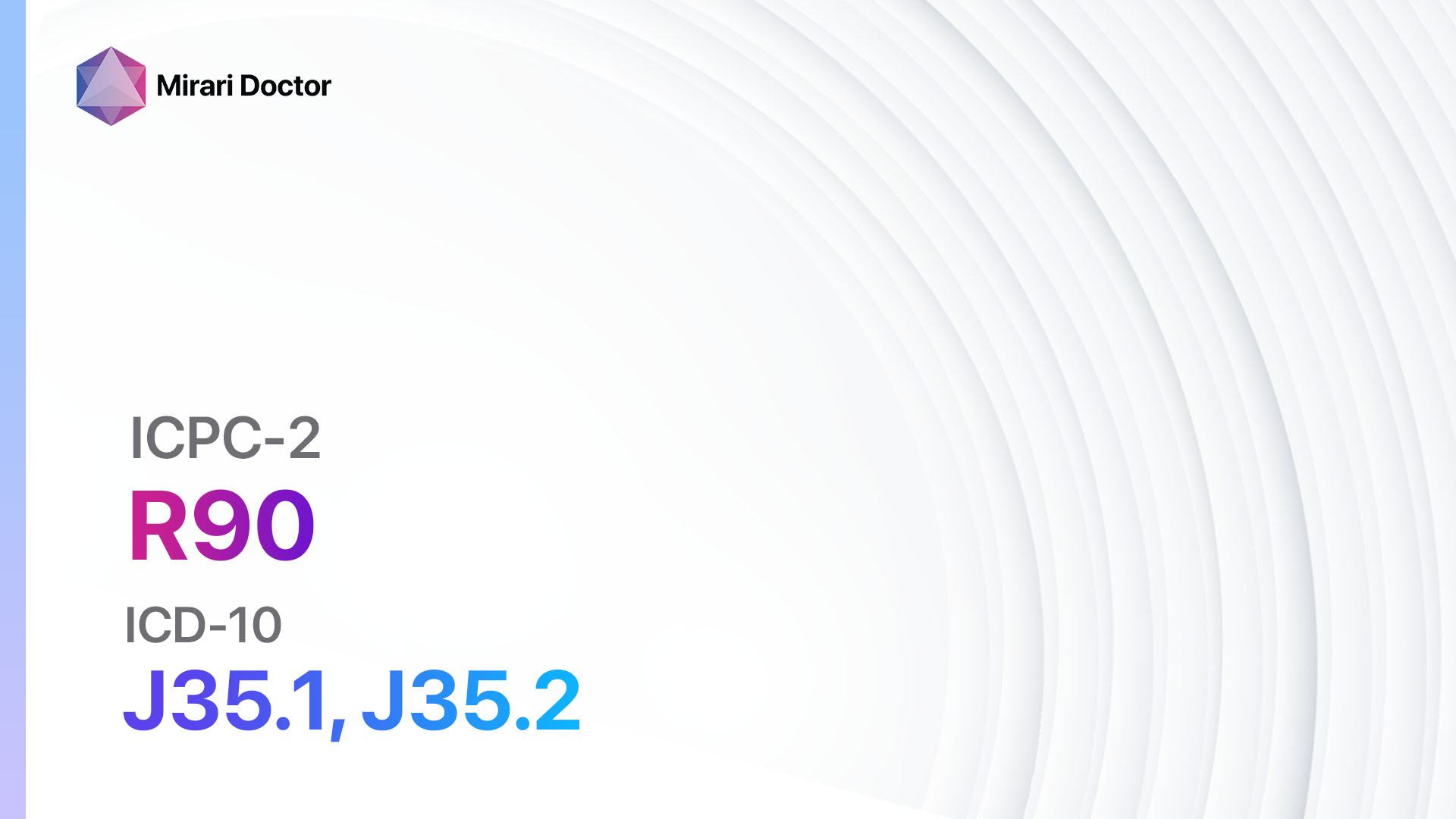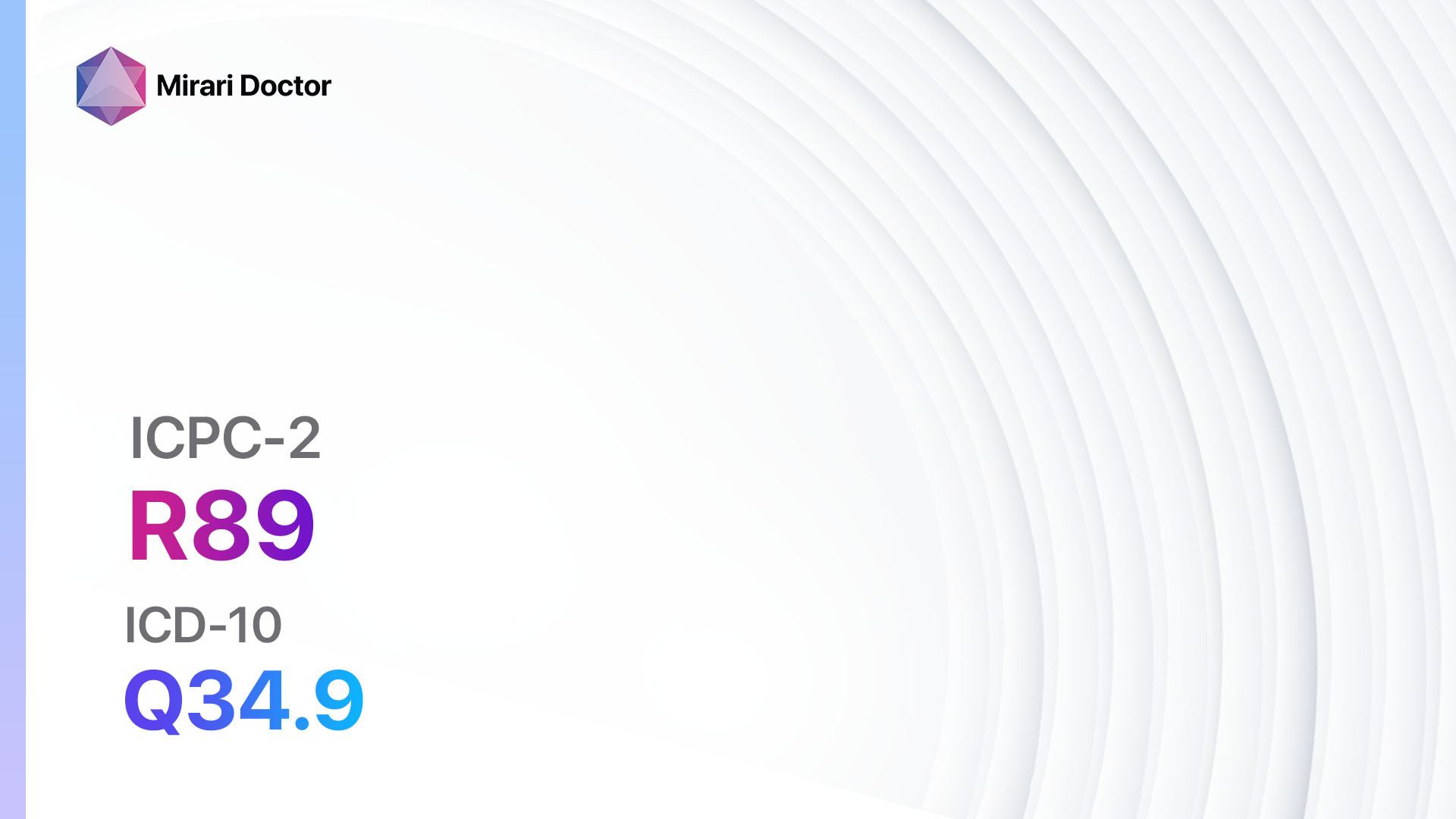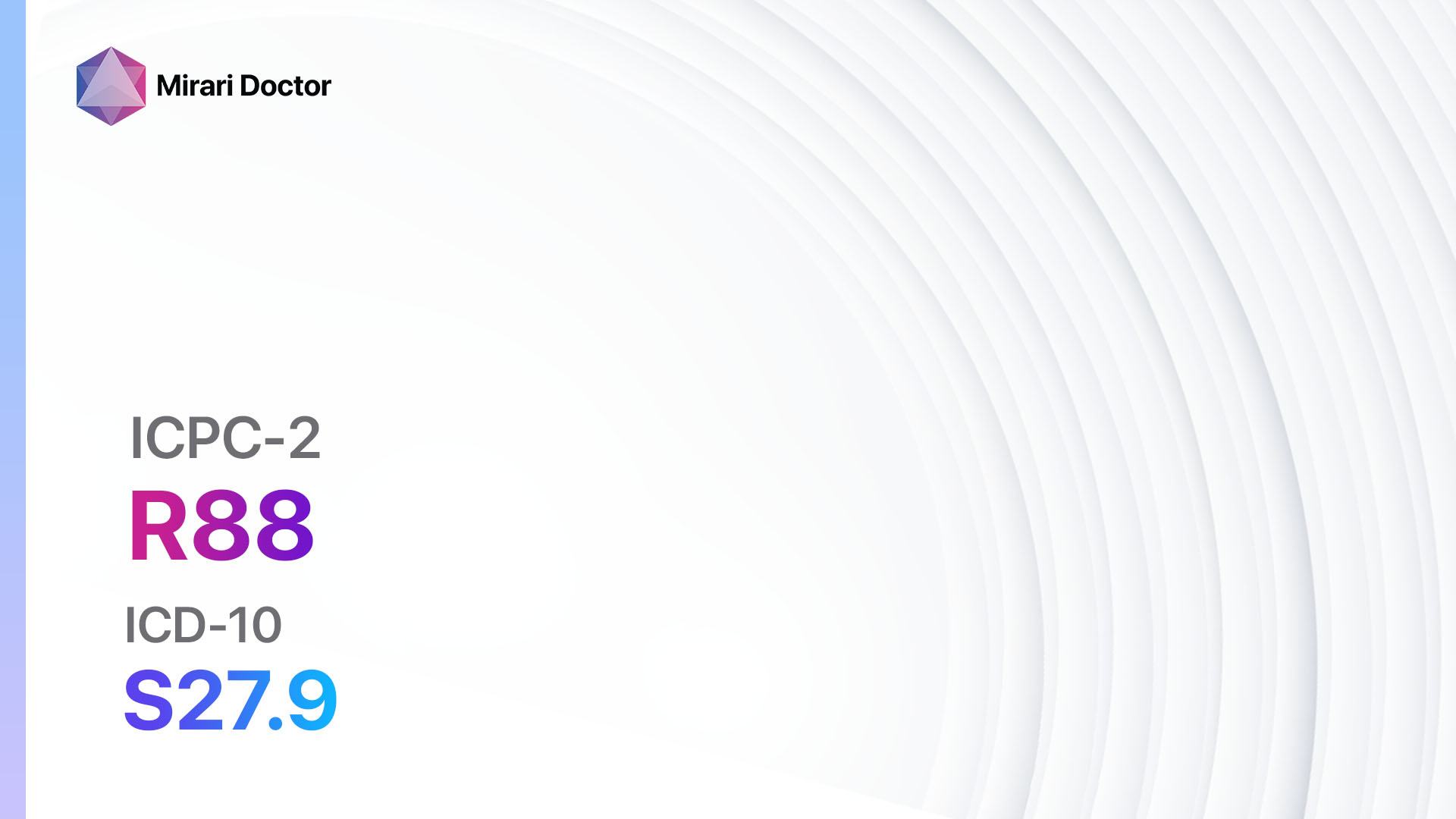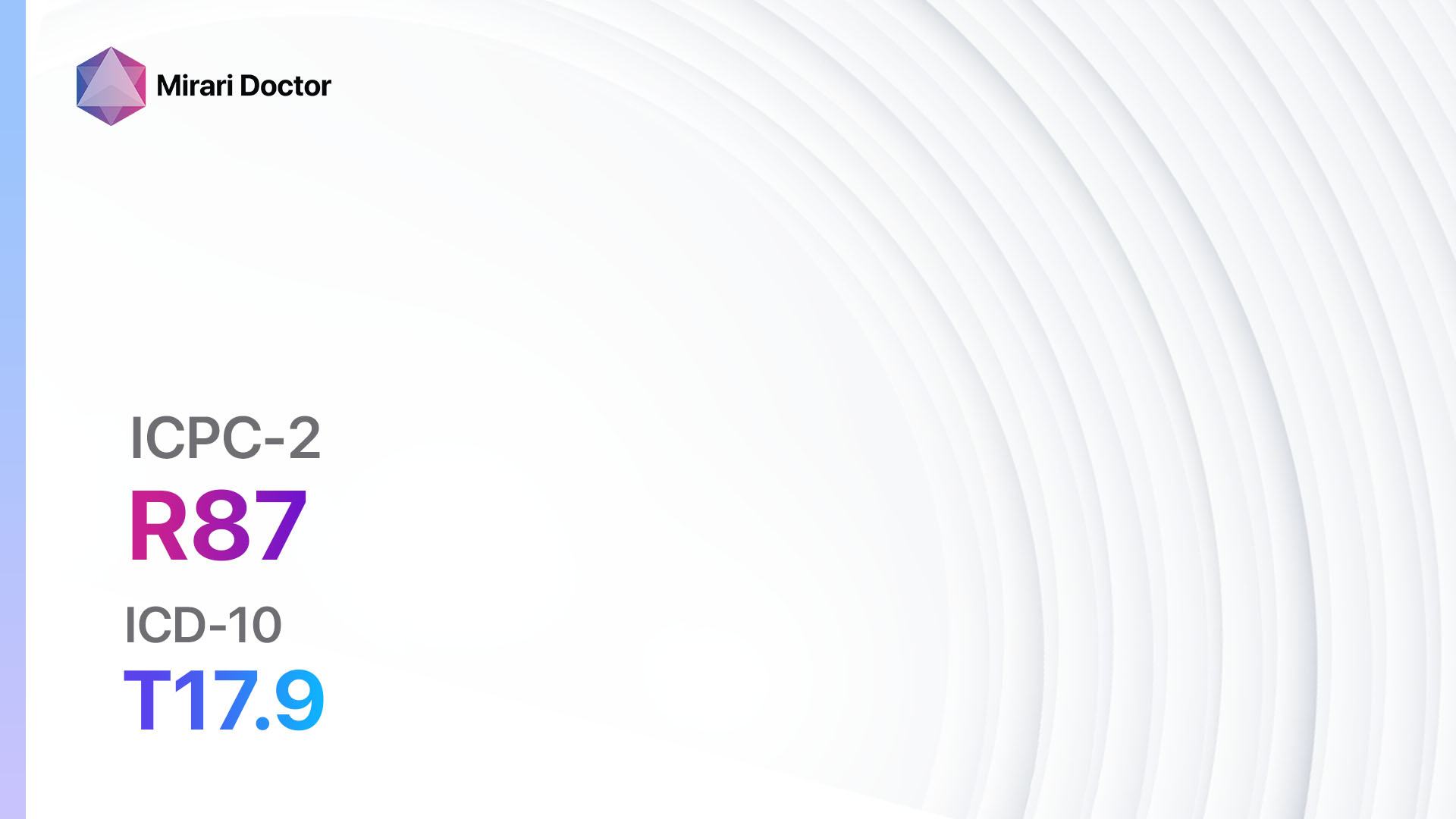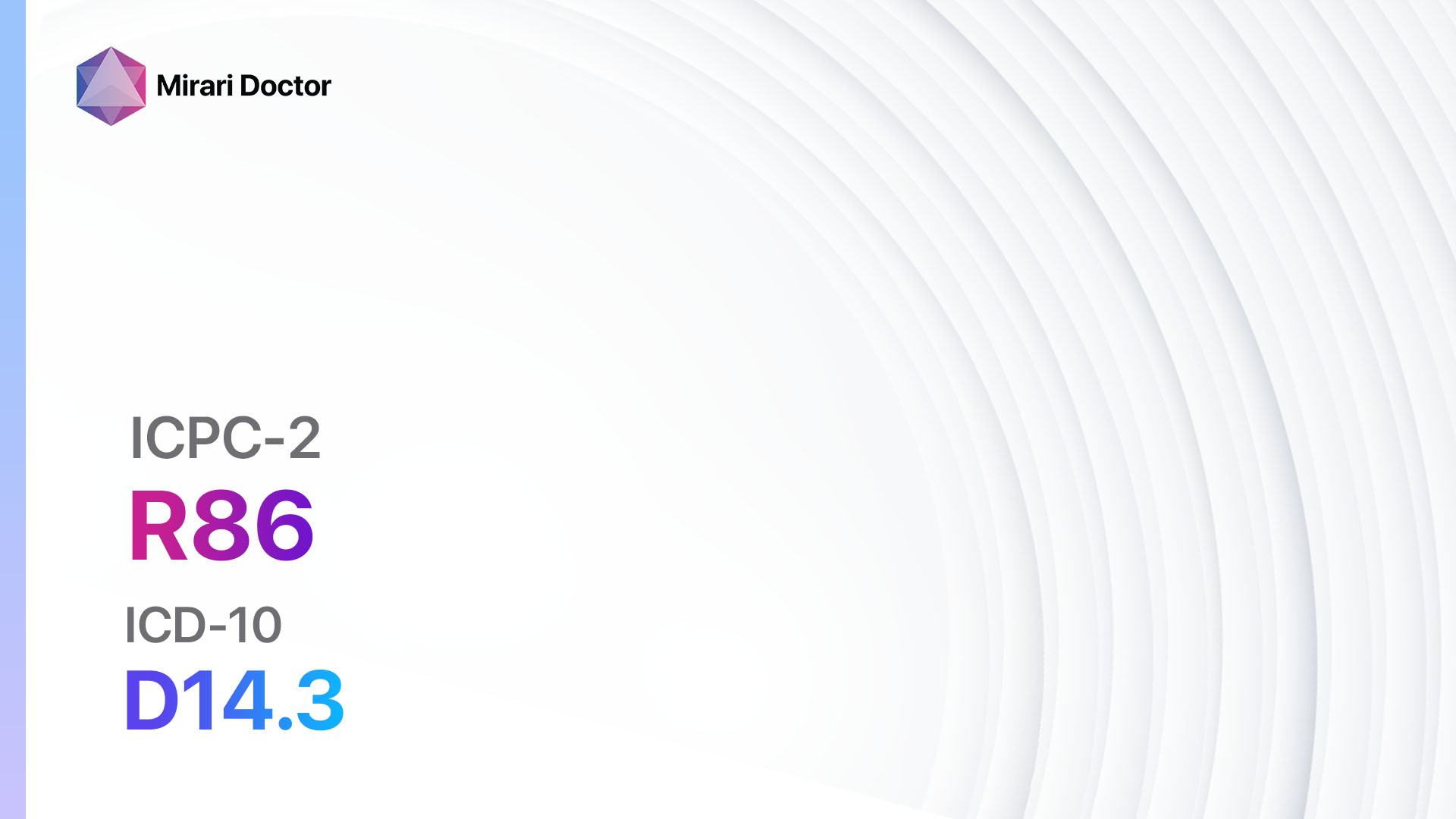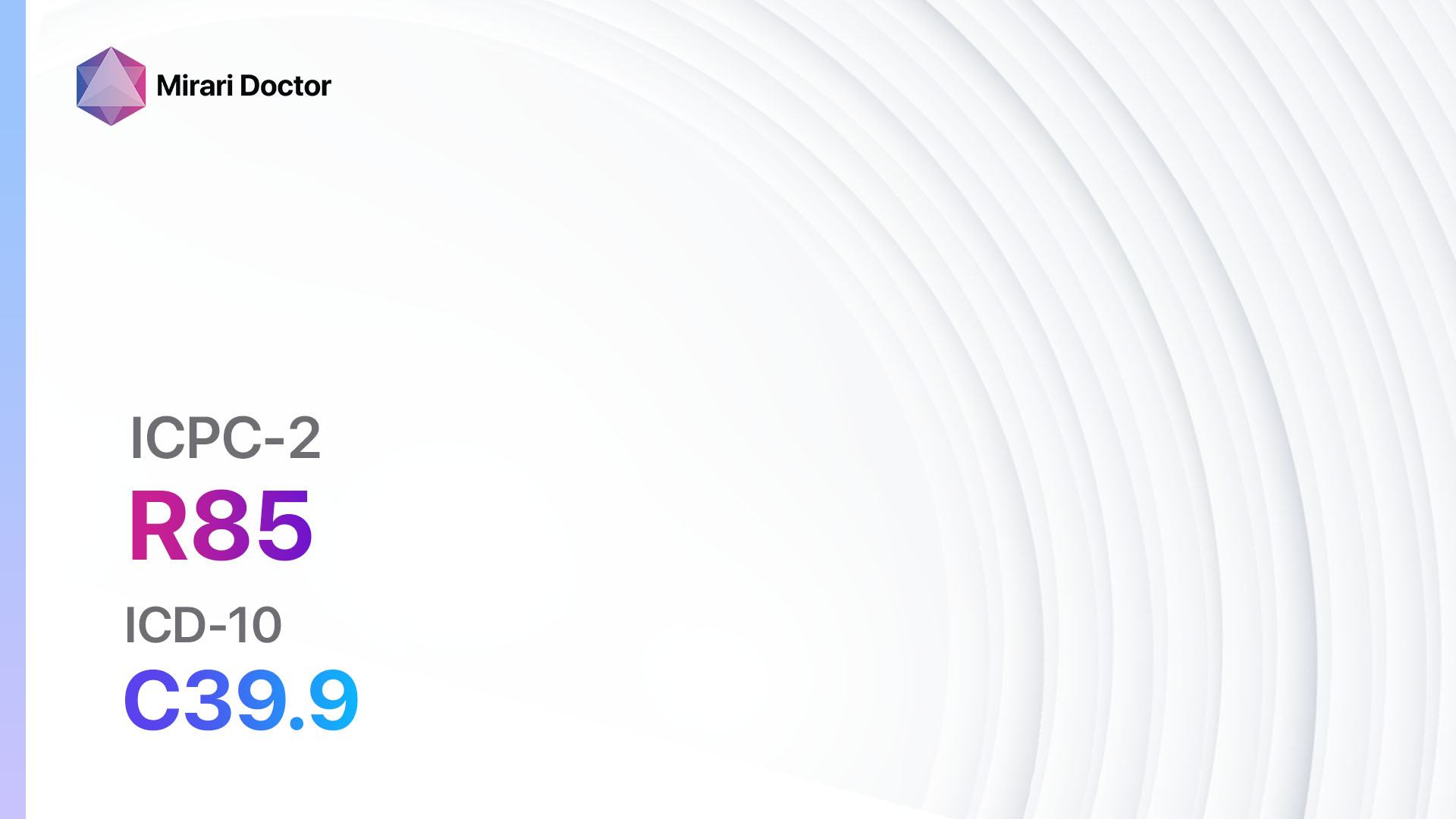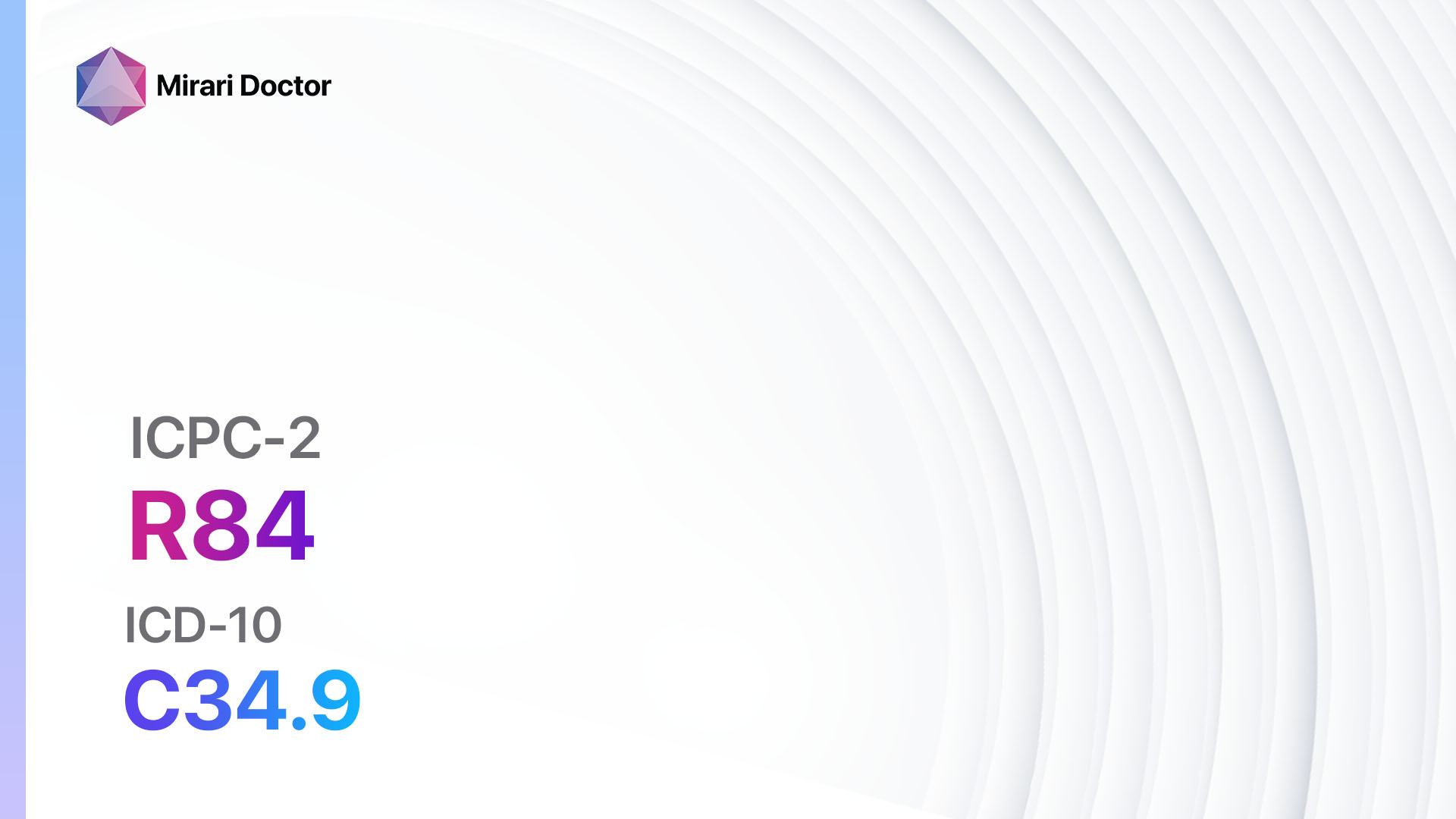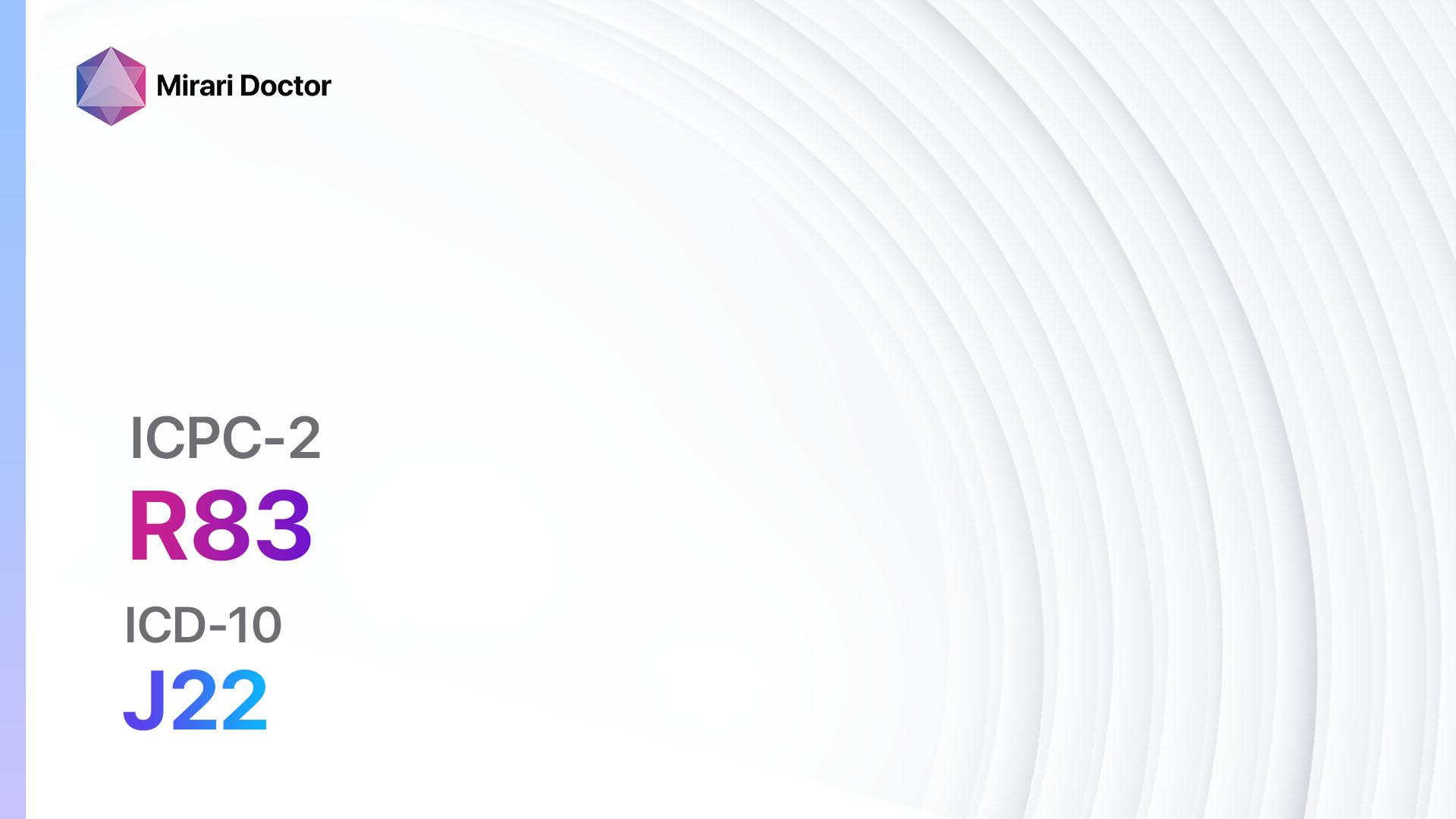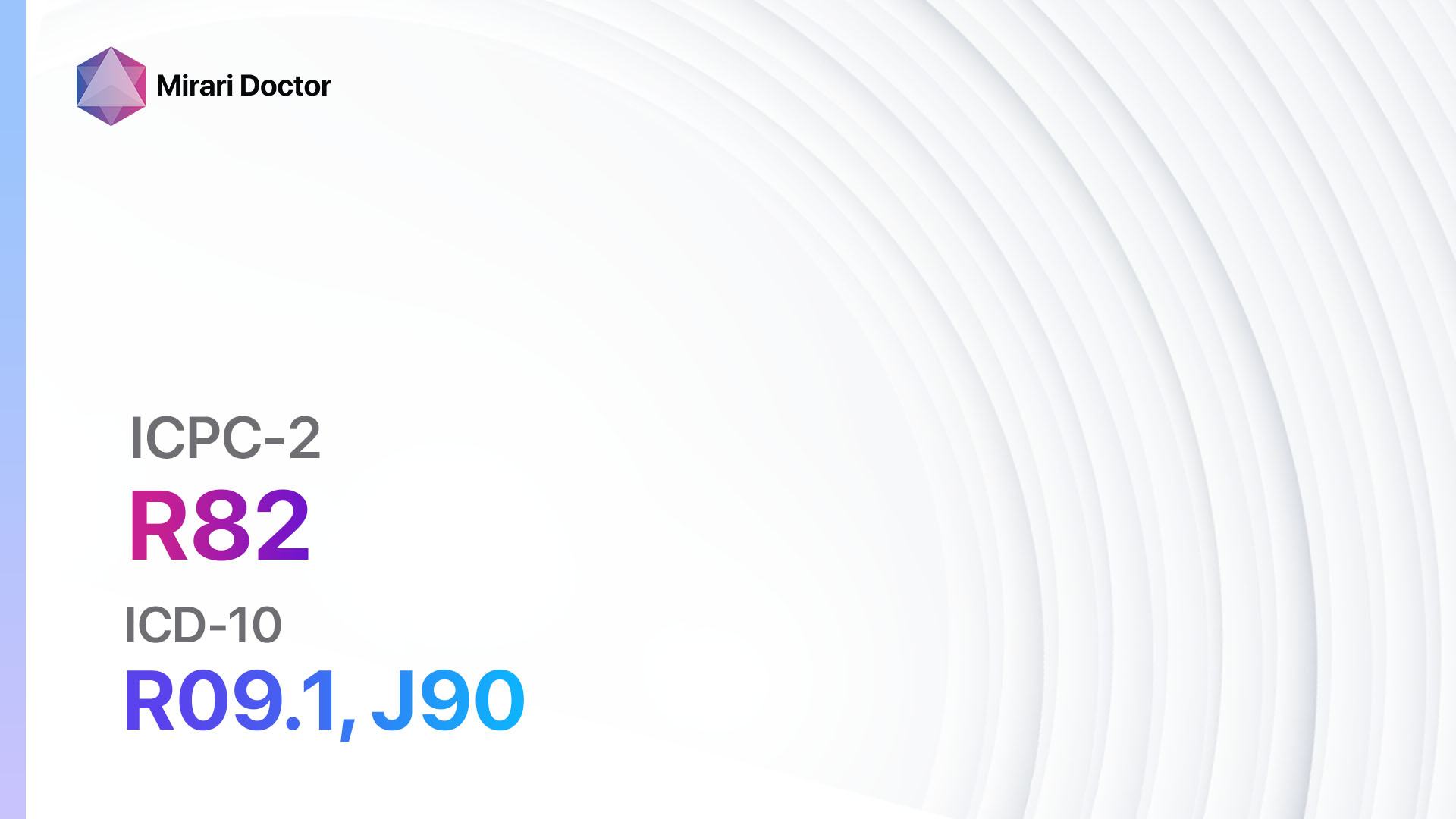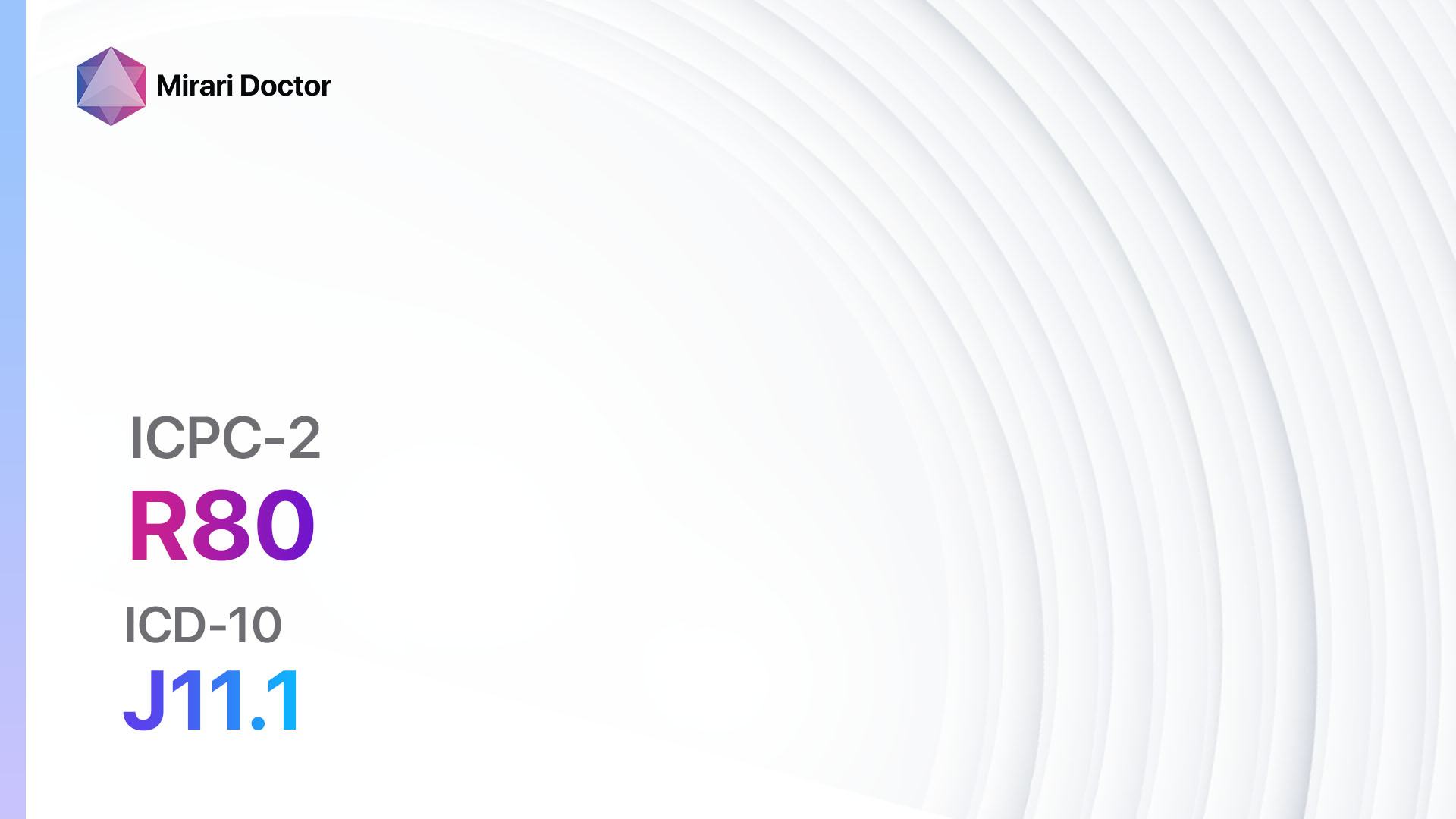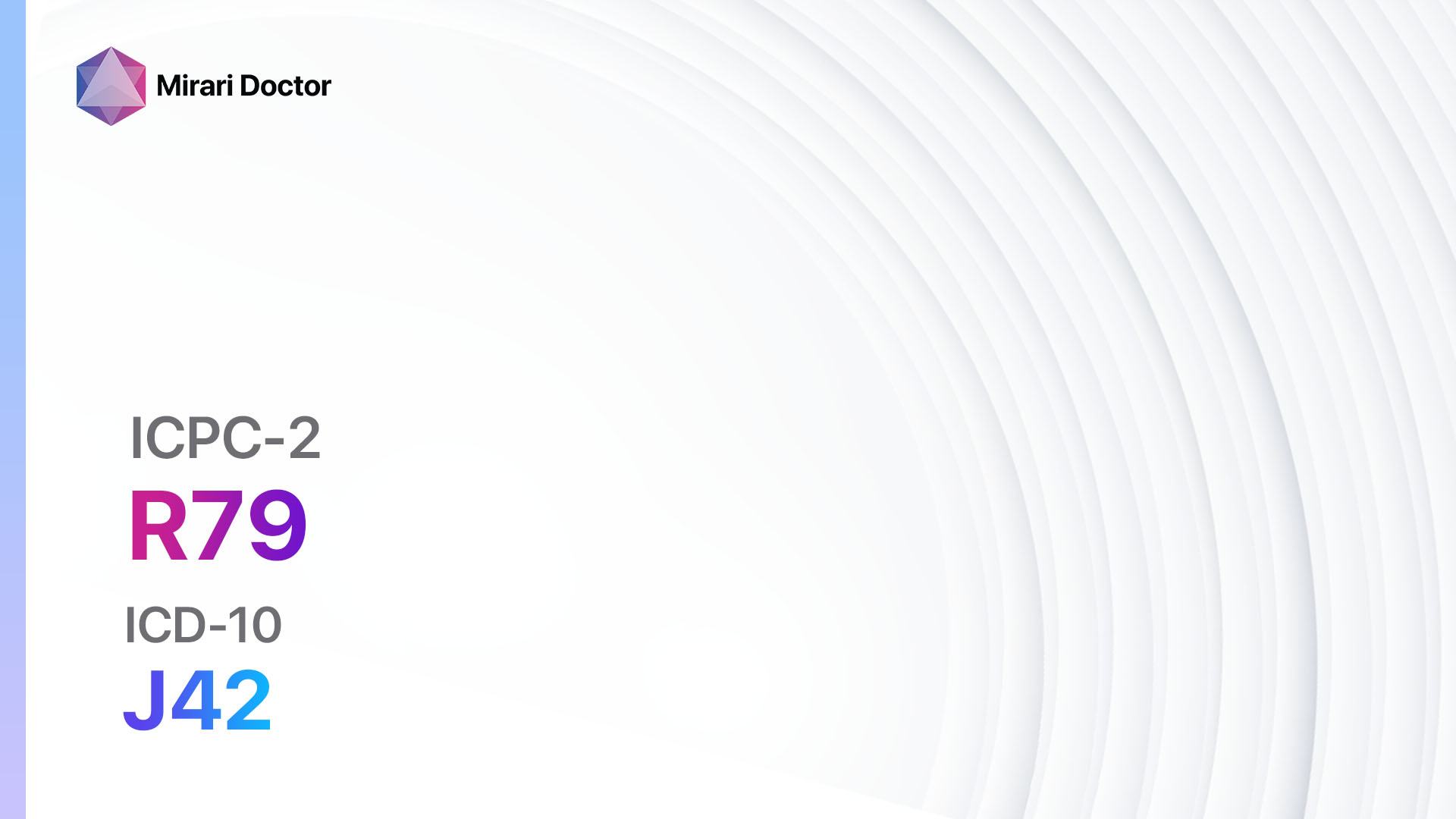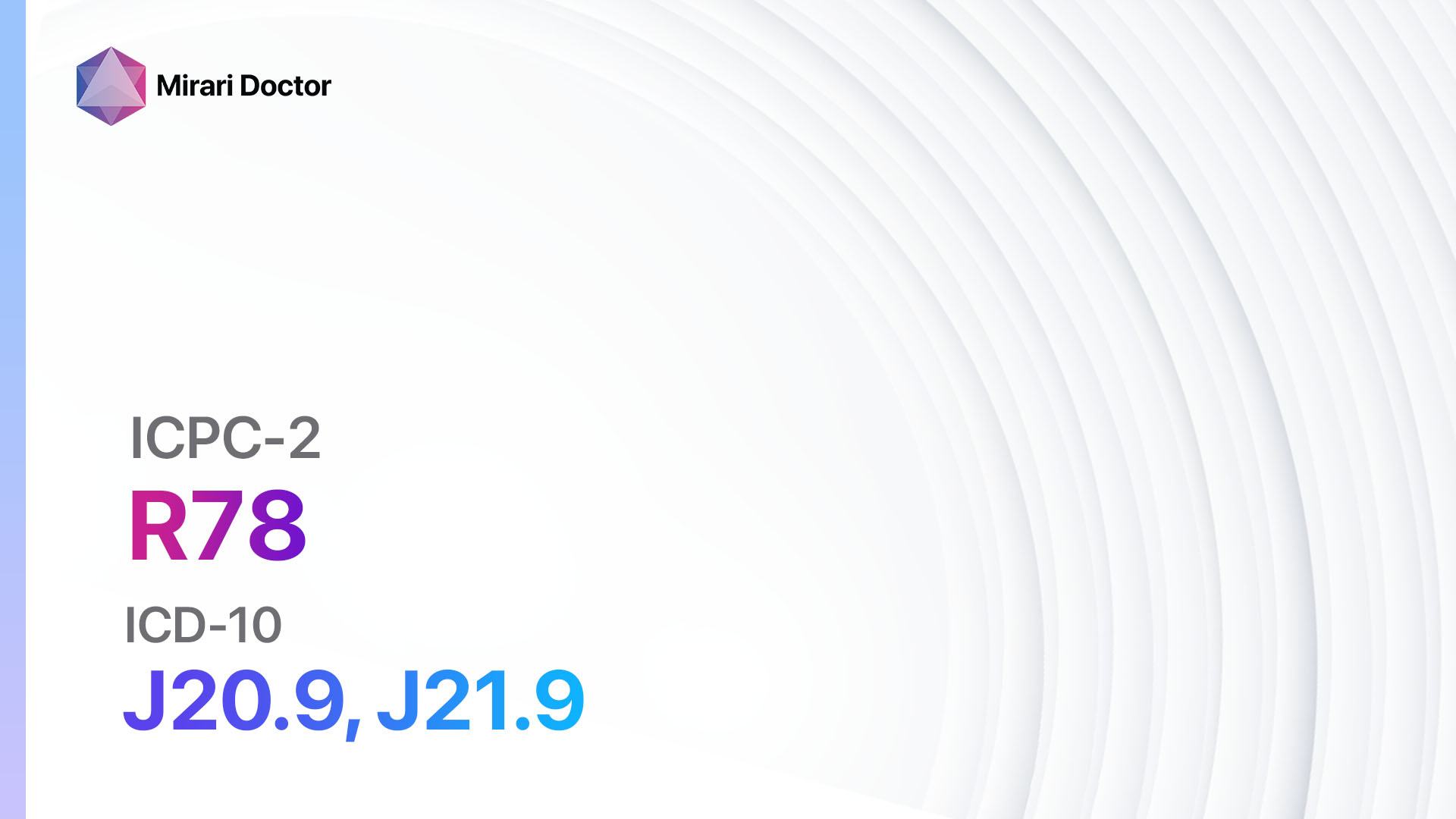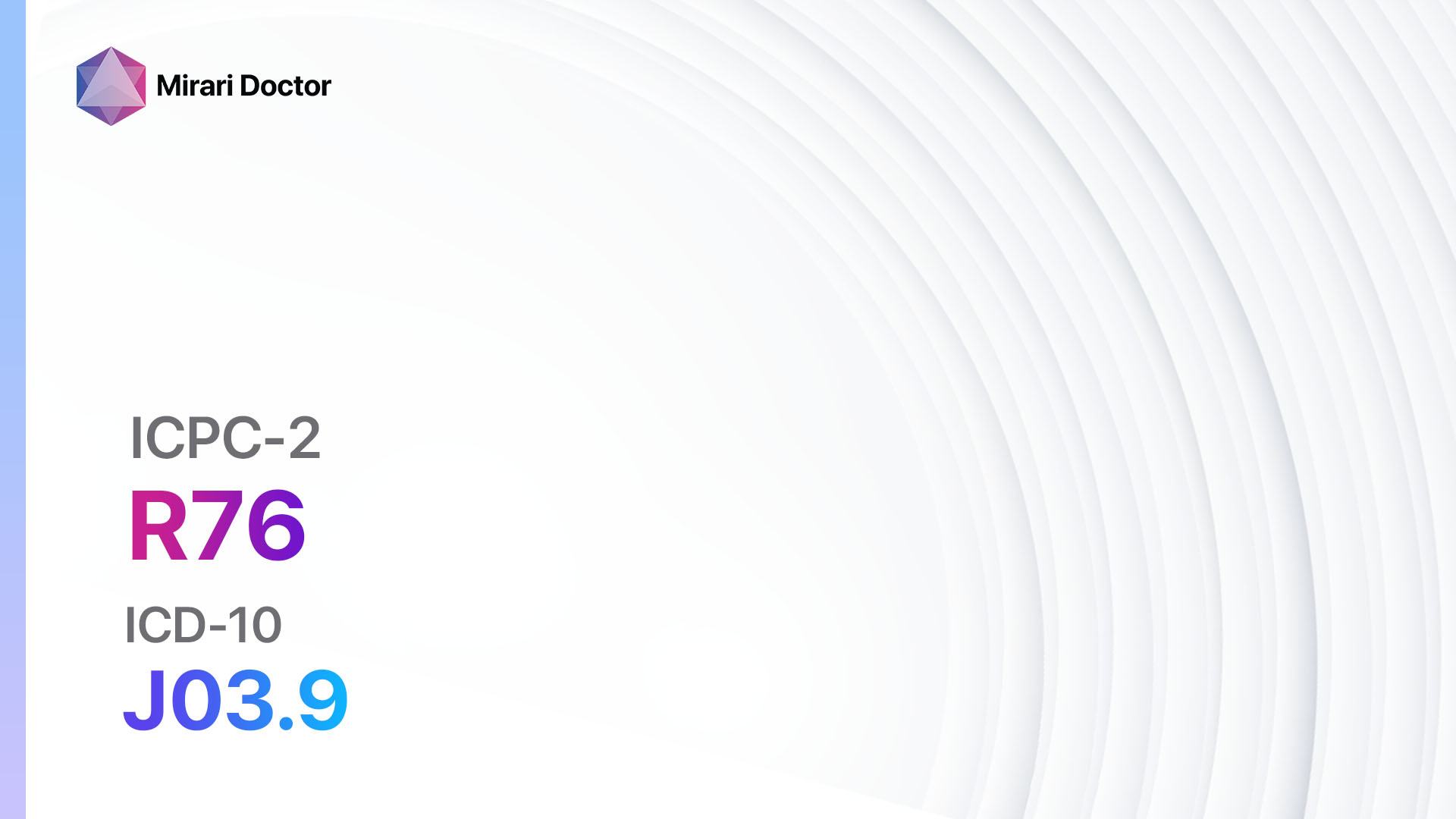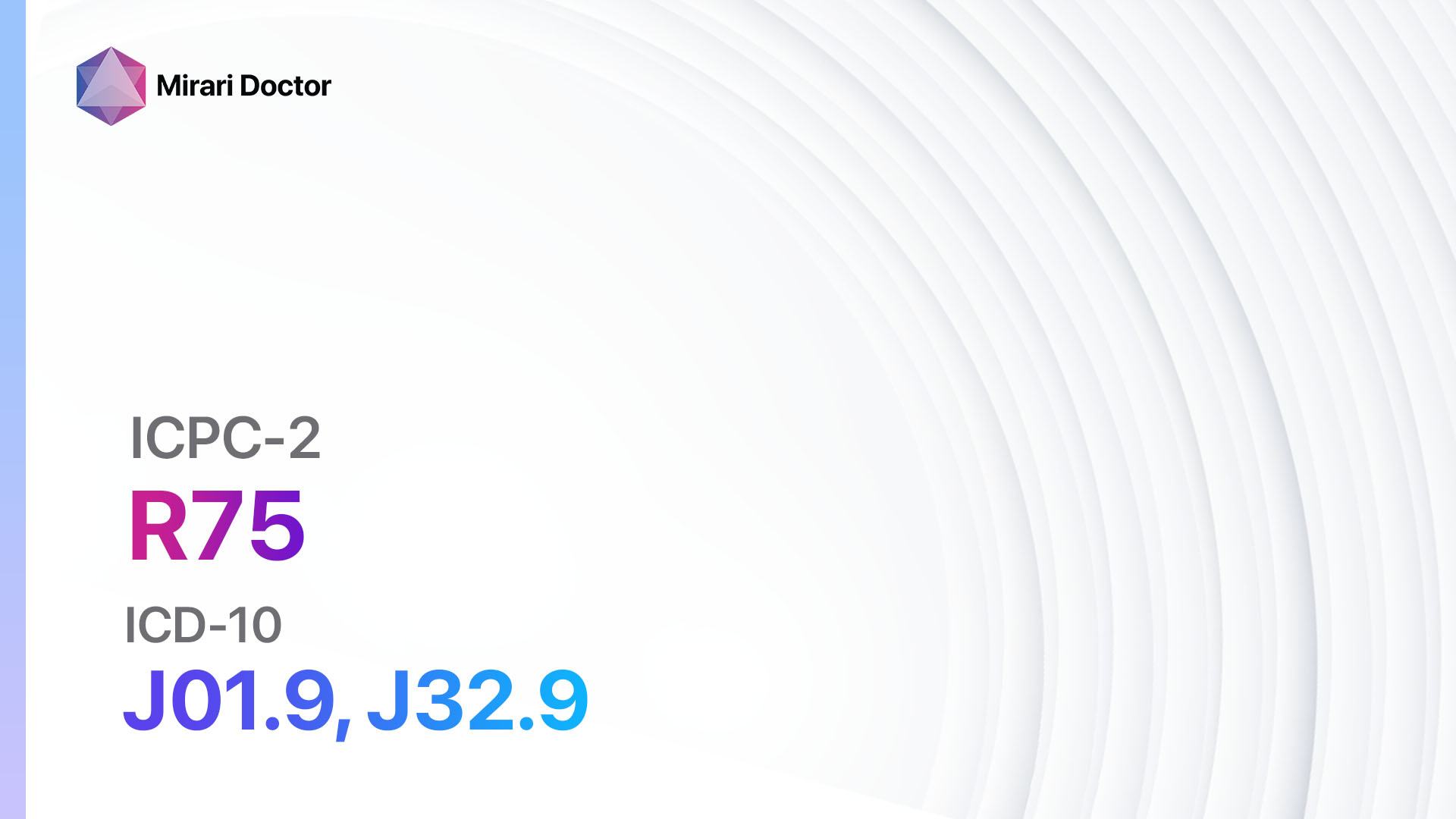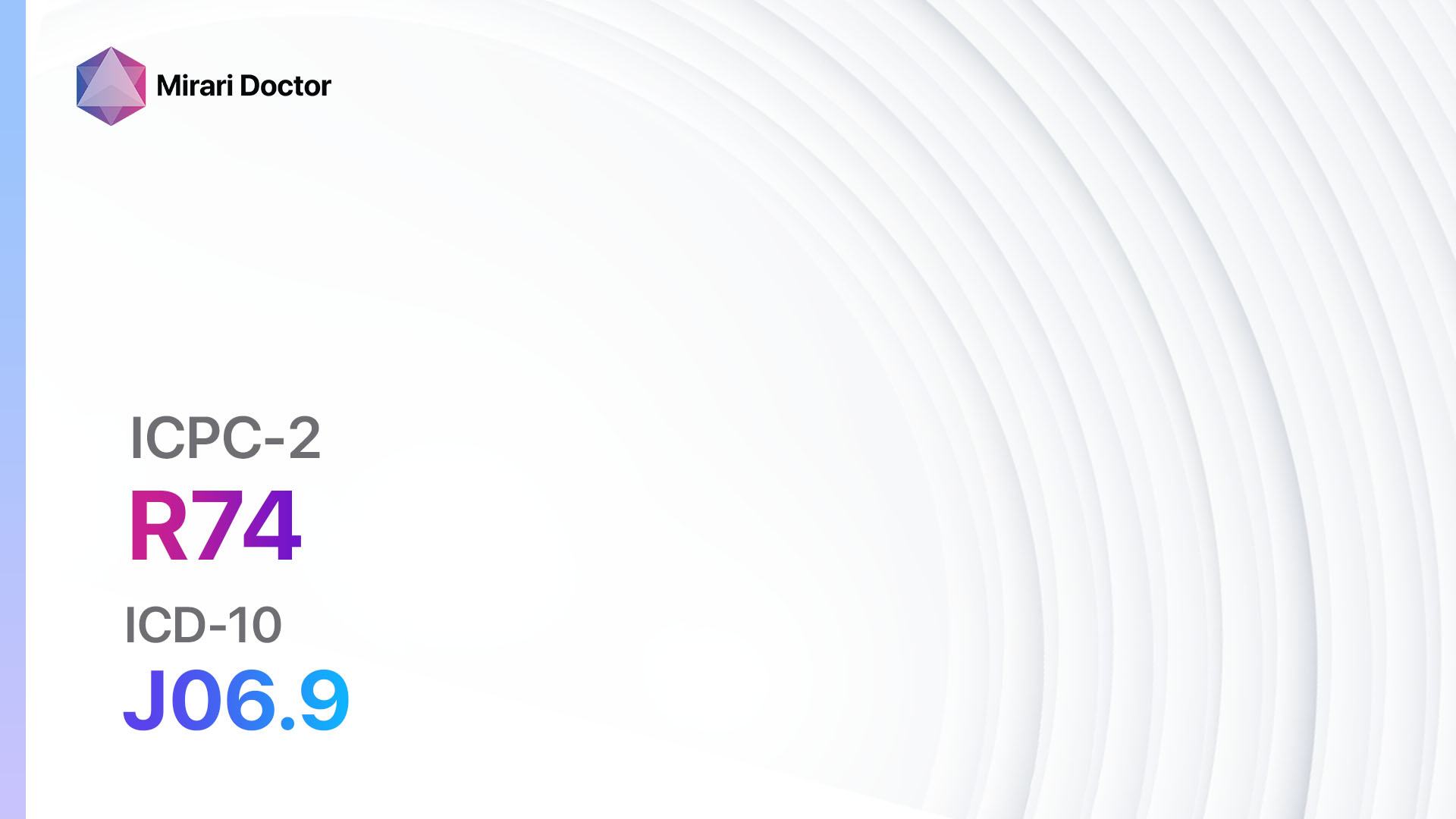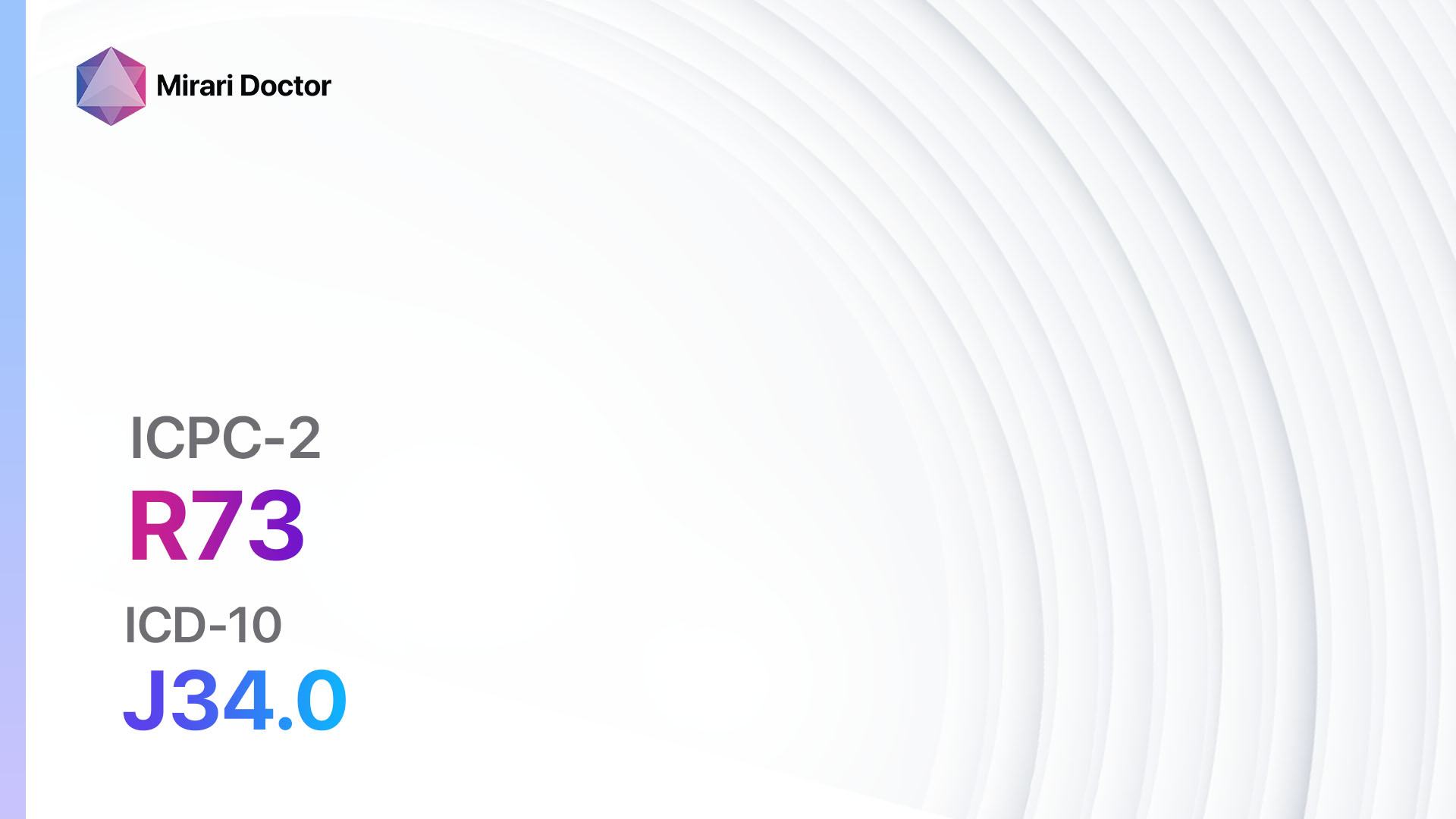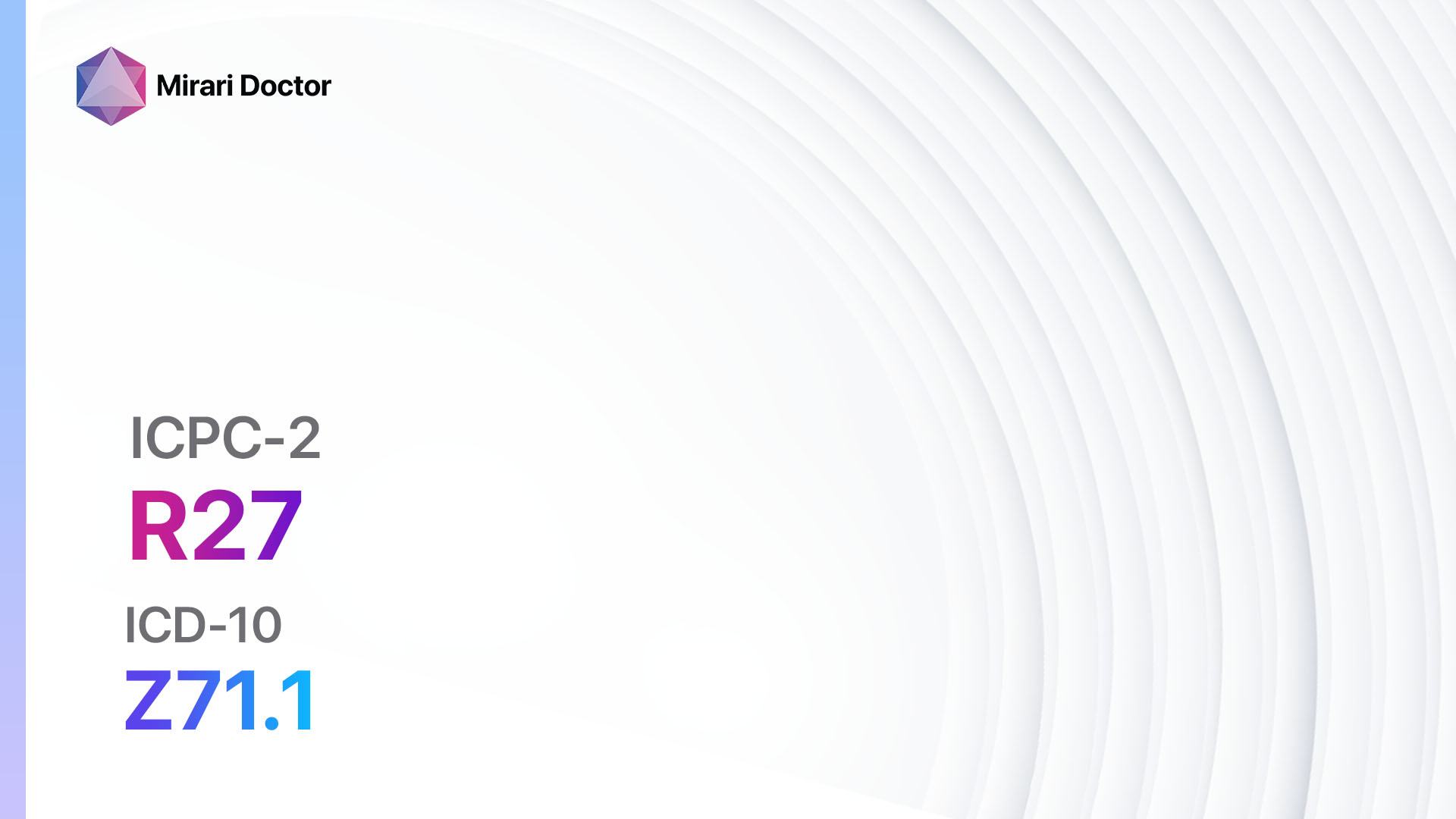
Introduction
Fear of respiratory disease can significantly impact an individual’s quality of life and mental well-being. It is important to address this fear and provide appropriate guidance and support to patients. The aim of this guide is to provide a comprehensive overview of the diagnostic steps, possible interventions, and lifestyle modifications that can help alleviate the fear of respiratory disease.
Codes
- ICPC-2 Code: R27 Fear of respiratory disease, other
- ICD-10 Code: Z71.1 Person with feared complaint in whom no diagnosis is made
Symptoms
- Shortness of breath: Patients may experience difficulty breathing or a feeling of breathlessness.[1]
- Chest pain: Some individuals may experience chest discomfort or pain.[2]
- Cough: Persistent coughing or coughing up blood may be present.[3]
- Fatigue: Patients may feel tired or have low energy levels.[4]
- Wheezing: A whistling sound while breathing may be heard.[5]
- Respiratory infections: Frequent respiratory infections may occur.[6]
Causes
- Environmental factors: Exposure to pollutants, allergens, or irritants can contribute to respiratory symptoms.[7]
- Smoking: Active or passive smoking can increase the risk of respiratory diseases.[8]
- Occupational hazards: Certain occupations may expose individuals to respiratory hazards.[9]
- Family history: Genetic factors can play a role in the development of respiratory diseases.[10]
- Pre-existing medical conditions: Chronic conditions such as asthma or chronic obstructive pulmonary disease (COPD) can increase the risk of respiratory symptoms.
Diagnostic Steps
Medical History
- Gather information about the patient’s symptoms, including the duration, severity, and any triggers.
- Identify any risk factors, such as smoking, occupational exposure, or family history of respiratory diseases.
- Assess the impact of symptoms on daily activities and quality of life.
Physical Examination
- Perform a thorough physical examination, focusing on the respiratory system.
- Auscultate the lungs to listen for abnormal breath sounds, such as wheezing or crackles.
- Assess the patient’s breathing pattern and effort.
- Check for signs of respiratory distress, such as increased respiratory rate or use of accessory muscles.
Laboratory Tests
- Complete blood count (CBC): To assess for any signs of infection or inflammation.
- Pulmonary function tests (PFTs): Measures lung function and helps diagnose respiratory conditions such as asthma or COPD.
- Allergy testing: Identifies specific allergens that may be triggering respiratory symptoms.
- Arterial blood gas (ABG) analysis: Evaluates oxygen and carbon dioxide levels in the blood.
- Sputum culture: Helps identify any bacterial or fungal infections in the respiratory tract.
Diagnostic Imaging
- Chest X-ray: Provides a visual assessment of the lungs and can detect abnormalities such as pneumonia or lung tumors.
- Computed tomography (CT) scan: Provides detailed images of the lungs and can help diagnose conditions such as pulmonary embolism or lung cancer.
- Magnetic resonance imaging (MRI): May be used to evaluate certain respiratory conditions, such as mediastinal masses or lung infections.
Other Tests
- Bronchoscopy: A flexible tube with a camera is inserted into the airways to visualize the lungs and collect samples for further testing.
- Sleep study: Evaluates sleep patterns and assesses for conditions such as sleep apnea.
- Exercise testing: Measures lung function during physical activity to assess exercise-induced respiratory symptoms.
- Echocardiogram: Assesses heart function and structure, which can be related to respiratory symptoms.
Follow-up and Patient Education
- Schedule follow-up appointments to monitor the patient’s progress and adjust treatment plans if necessary.
- Provide education on respiratory hygiene, such as proper handwashing and covering the mouth when coughing or sneezing.
- Discuss the importance of smoking cessation and provide resources for quitting.
- Encourage regular exercise and a healthy lifestyle to improve overall respiratory health.
Possible Interventions
Traditional Interventions
Medications:
Top 5 drugs for Fear of respiratory disease, other:
- Inhaled corticosteroids (e.g., Fluticasone, Budesonide):
- Cost: Generic versions can range from $30 to $100 per month.
- Contraindications: Hypersensitivity to corticosteroids.
- Side effects: Hoarseness, oral thrush.
- Severe side effects: Adrenal suppression, osteoporosis.
- Drug interactions: None significant.
- Warning: Rinse mouth after inhaler use to prevent oral thrush.
- Bronchodilators (e.g., Albuterol, Salmeterol):
- Cost: Generic versions can range from $10 to $50 per month.
- Contraindications: Hypersensitivity to bronchodilators.
- Side effects: Tremors, increased heart rate.
- Severe side effects: Cardiac arrhythmias, paradoxical bronchospasm.
- Drug interactions: Beta-blockers, monoamine oxidase inhibitors (MAOIs).
- Warning: Overuse can lead to decreased effectiveness.
- Antihistamines (e.g., Loratadine, Cetirizine):
- Cost: Generic versions can range from $5 to $20 per month.
- Contraindications: Hypersensitivity to antihistamines.
- Side effects: Drowsiness, dry mouth.
- Severe side effects: None significant.
- Drug interactions: Sedatives, alcohol.
- Warning: May cause drowsiness, avoid activities requiring alertness.
- Leukotriene modifiers (e.g., Montelukast, Zafirlukast):
- Cost: Generic versions can range from $10 to $50 per month.
- Contraindications: Hypersensitivity to leukotriene modifiers.
- Side effects: Headache, gastrointestinal upset.
- Severe side effects: Neuropsychiatric events.
- Drug interactions: None significant.
- Warning: Monitor for changes in mood or behavior.
- Mucolytics (e.g., Acetylcysteine, Carbocisteine):
- Cost: Generic versions can range from $10 to $30 per month.
- Contraindications: Hypersensitivity to mucolytics.
- Side effects: Nausea, vomiting.
- Severe side effects: Bronchospasm, anaphylaxis.
- Drug interactions: None significant.
- Warning: Avoid use in patients with a history of bronchospasm.
Alternative Drugs:
- Antidepressants (e.g., Sertraline, Escitalopram): May be prescribed if anxiety or depression is contributing to the fear of respiratory disease.
- Anxiolytics (e.g., Alprazolam, Diazepam): Can help alleviate anxiety symptoms associated with the fear of respiratory disease.
- Antitussives (e.g., Dextromethorphan, Codeine): May be used to suppress coughing and provide symptomatic relief.
Surgical Procedures:
- Lung transplantation: Considered in severe cases where other interventions have failed. Cost: $700,000 to $1,000,000.
- Bullectomy: Removal of large air-filled spaces (bullae) in the lungs. Cost: $20,000 to $50,000.
Alternative Interventions
- Breathing exercises: Techniques such as diaphragmatic breathing or pursed-lip breathing can help improve lung function and reduce anxiety. Cost: Free.
- Yoga: Incorporating yoga poses and breathing exercises can improve respiratory function and promote relaxation. Cost: $10-$20 per session.
- Meditation: Mindfulness meditation can help reduce anxiety and promote a sense of calm. Cost: Free.
- Acupuncture: May help alleviate respiratory symptoms and reduce anxiety. Cost: $60-$120 per session.
- Herbal supplements: Certain herbs, such as ginger or eucalyptus, may have potential benefits for respiratory health. Cost: Varies depending on the specific supplement.
Lifestyle Interventions
- Smoking cessation: Quitting smoking is crucial for improving respiratory health. Cost: Varies depending on the chosen method (e.g., nicotine replacement therapy, medications, counseling).
- Regular exercise: Engaging in physical activity can improve lung function and overall respiratory health. Cost: Free to gym membership fees.
- Healthy diet: Consuming a balanced diet rich in fruits, vegetables, and whole grains can support respiratory health. Cost: Varies depending on food choices.
- Avoidance of respiratory irritants: Minimizing exposure to pollutants, allergens, and irritants can help reduce respiratory symptoms. Cost: Free.
- Stress management: Practicing stress-reducing techniques, such as deep breathing or meditation, can alleviate anxiety and improve respiratory symptoms. Cost: Free.
It is important to note that the cost ranges provided are approximate and may vary depending on the location and availability of the interventions. It is recommended to consult with healthcare professionals for personalized treatment options and cost estimates.
Mirari Cold Plasma Alternative Intervention
Understanding Mirari Cold Plasma
- Safe and Non-Invasive Treatment:Mirari Cold Plasma is a safe and non-invasive treatment option for various skin conditions. It does not require incisions, minimizing the risk of scarring, bleeding, or tissue damage.
- Efficient Extraction of Foreign Bodies:Mirari Cold Plasma facilitates the removal of foreign bodies from the skin by degrading and dissociating organic matter, allowing easier access and extraction.
- Pain Reduction and Comfort:Mirari Cold Plasma has a local analgesic effect, providing pain relief during the treatment, making it more comfortable for the patient.
- Reduced Risk of Infection:Mirari Cold Plasma has antimicrobial properties, effectively killing bacteria and reducing the risk of infection.
- Accelerated Healing and Minimal Scarring: Mirari Cold Plasma stimulates wound healing and tissue regeneration, reducing healing time and minimizing the formation of scars.
Mirari Cold Plasma Prescription
Video instructions for using Mirari Cold Plasma Device – R27 Fear of respiratory disease, other (ICD-10:Z71.1)
| Mild | Moderate | Severe |
| Mode setting: 1 (Infection) Location: 6 (Throat, Lymphatic & Thyroid) Morning: 15 minutes, Evening: 15 minutes | Mode setting: 1 (Infection) Location: 6 (Throat, Lymphatic & Thyroid) Morning: 30 minutes, Lunch: 30 minutes, Evening: 30 minutes | Mode setting: 1 (Infection) Location: 6 (Throat, Lymphatic & Thyroid) Morning: 30 minutes, Lunch: 30 minutes, Evening: 30 minutes |
| Mode setting: 2 (Wound Healing) Location: 6 (Throat, Lymphatic & Thyroid) Morning: 15 minutes, Evening: 15 minutes | Mode setting: 2 (Wound Healing) Location: 6 (Throat, Lymphatic & Thyroid) Morning: 30 minutes, Lunch: 30 minutes, Evening: 30 minutes | Mode setting: 2 (Wound Healing) Location: 6 (Throat, Lymphatic & Thyroid) Morning: 30 minutes, Lunch: 30 minutes, Evening: 30 minutes |
| Modesetting:7 (Immunotherapy) Location:1(Sacrum) Morning:15minutes, Evening:15minutes | Modesetting:7 (Immunotherapy) Location:1(Sacrum) Morning:30minutes, Lunch:30minutes, Evening:30minutes | Modesetting:7 (Immunotherapy) Location:1(Sacrum) Morning:30minutes, Lunch:30minutes, Evening:30minutes |
| Total Morning: 45 minutes approx. $7.50 USD, Evening: 45 minutes approx. $7.50 USD | Total Morning: 90 minutes approx. $15 USD, Lunch: 90 minutes approx. $15 USD, Evening: 90 minutes approx. $15 USD | Total Morning: 90 minutes approx. $15 USD, Lunch: 90 minutes approx. $15 USD, Evening: 90 minutes approx. $15 USD |
| Usual treatment for 7-60 days approx. $105 USD – $900 USD | Usual treatment for 6-8 weeks approx. $1,890 USD – $2,520 USD | Usual treatment for 3-6 months approx. $4,050 USD – $8,100 USD |
 |
|
Use the Mirari Cold Plasma device to treat Fear of respiratory disease, other effectively.
WARNING: MIRARI COLD PLASMA IS DESIGNED FOR THE HUMAN BODY WITHOUT ANY ARTIFICIAL OR THIRD PARTY PRODUCTS. USE OF OTHER PRODUCTS IN COMBINATION WITH MIRARI COLD PLASMA MAY CAUSE UNPREDICTABLE EFFECTS, HARM OR INJURY. PLEASE CONSULT A MEDICAL PROFESSIONAL BEFORE COMBINING ANY OTHER PRODUCTS WITH USE OF MIRARI.
Step 1: Cleanse the Skin
- Start by cleaning the affected area of the skin with a gentle cleanser or mild soap and water. Gently pat the area dry with a clean towel.
Step 2: Prepare the Mirari Cold Plasma device
- Ensure that the Mirari Cold Plasma device is fully charged or has fresh batteries as per the manufacturer’s instructions. Make sure the device is clean and in good working condition.
- Switch on the Mirari device using the power button or by following the specific instructions provided with the device.
- Some Mirari devices may have adjustable settings for intensity or treatment duration. Follow the manufacturer’s instructions to select the appropriate settings based on your needs and the recommended guidelines.
Step 3: Apply the Device
- Place the Mirari device in direct contact with the affected area of the skin. Gently glide or hold the device over the skin surface, ensuring even coverage of the area experiencing.
- Slowly move the Mirari device in a circular motion or follow a specific pattern as indicated in the user manual. This helps ensure thorough treatment coverage.
Step 4: Monitor and Assess:
- Keep track of your progress and evaluate the effectiveness of the Mirari device in managing your Fear of respiratory disease, other. If you have any concerns or notice any adverse reactions, consult with your health care professional.
Note
This guide is for informational purposes only and should not replace the advice of a medical professional. Always consult with your healthcare provider or a qualified medical professional for personal advice, diagnosis, or treatment. Do not solely rely on the information presented here for decisions about your health. Use of this information is at your own risk. The authors of this guide, nor any associated entities or platforms, are not responsible for any potential adverse effects or outcomes based on the content.
Mirari Cold Plasma System Disclaimer
- Purpose: The Mirari Cold Plasma System is a Class 2 medical device designed for use by trained healthcare professionals. It is registered for use in Thailand and Vietnam. It is not intended for use outside of these locations.
- Informational Use: The content and information provided with the device are for educational and informational purposes only. They are not a substitute for professional medical advice or care.
- Variable Outcomes: While the device is approved for specific uses, individual outcomes can differ. We do not assert or guarantee specific medical outcomes.
- Consultation: Prior to utilizing the device or making decisions based on its content, it is essential to consult with a Certified Mirari Tele-Therapist and your medical healthcare provider regarding specific protocols.
- Liability: By using this device, users are acknowledging and accepting all potential risks. Neither the manufacturer nor the distributor will be held accountable for any adverse reactions, injuries, or damages stemming from its use.
- Geographical Availability: This device has received approval for designated purposes by the Thai and Vietnam FDA. As of now, outside of Thailand and Vietnam, the Mirari Cold Plasma System is not available for purchase or use.
References
- Parshall MB, et al. An official American Thoracic Society statement: update on the mechanisms, assessment, and management of dyspnea. Am J Respir Crit Care Med. 2012;185(4):435-452.
- Kochanek KD, et al. Deaths: Final data for 2017. Natl Vital Stat Rep. 2019;68(9):1-77.
- Irwin RS, et al. Classification of cough as a symptom in adults and management algorithms: CHEST guideline and expert panel report. Chest. 2018;153(1):196-209.
- Spruit MA, et al. An official American Thoracic Society/European Respiratory Society statement: key concepts and advances in pulmonary rehabilitation. Am J Respir Crit Care Med. 2013;188(8):e13-e64.
- Pasterkamp H, et al. Towards the standardisation of lung sound nomenclature. Eur Respir J. 2016;47(3):724-732.
- Troeger C, et al. Estimates of the global, regional, and national morbidity, mortality, and aetiologies of lower respiratory infections in 195 countries, 1990-2016: a systematic analysis for the Global Burden of Disease Study 2016. Lancet Infect Dis. 2018;18(11):1191-1210.
- Guarnieri M, Balmes JR. Outdoor air pollution and asthma. Lancet. 2014;383(9928):1581-1592.
- U.S. Department of Health and Human Services. The Health Consequences of Smoking—50 Years of Progress: A Report of the Surgeon General. Atlanta: U.S. Department of Health and Human Services, Centers for Disease Control and Prevention, National Center for Chronic Disease Prevention and Health Promotion, Office on Smoking and Health, 2014.
- Cullinan P, et al. Occupational lung diseases: from old and novel exposures to effective preventive strategies. Lancet Respir Med. 2017;5(5):445-455.
- Hobbs BD, et al. Genetic loci associated with chronic obstructive pulmonary disease overlap with loci for lung function and pulmonary fibrosis. Nat Genet. 2017;49(3):426-432.
Related articles
Made in USA


